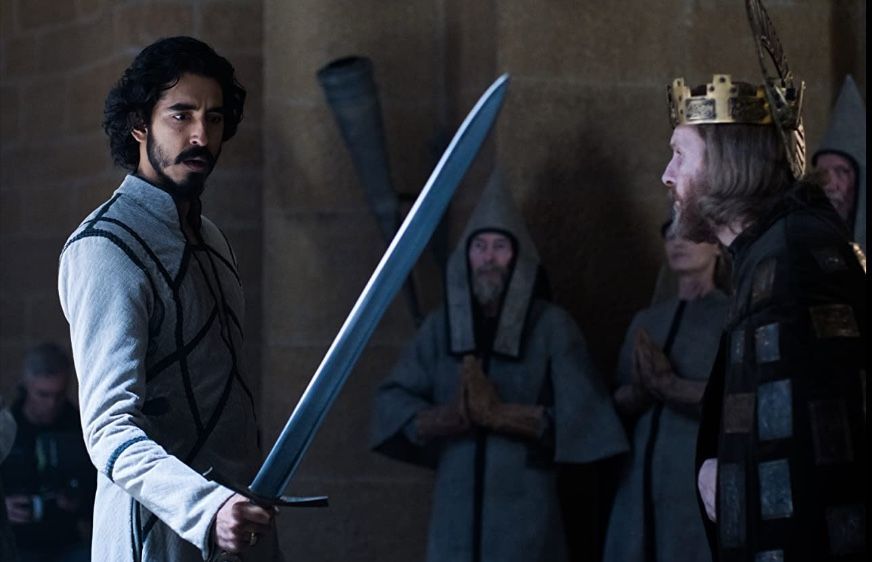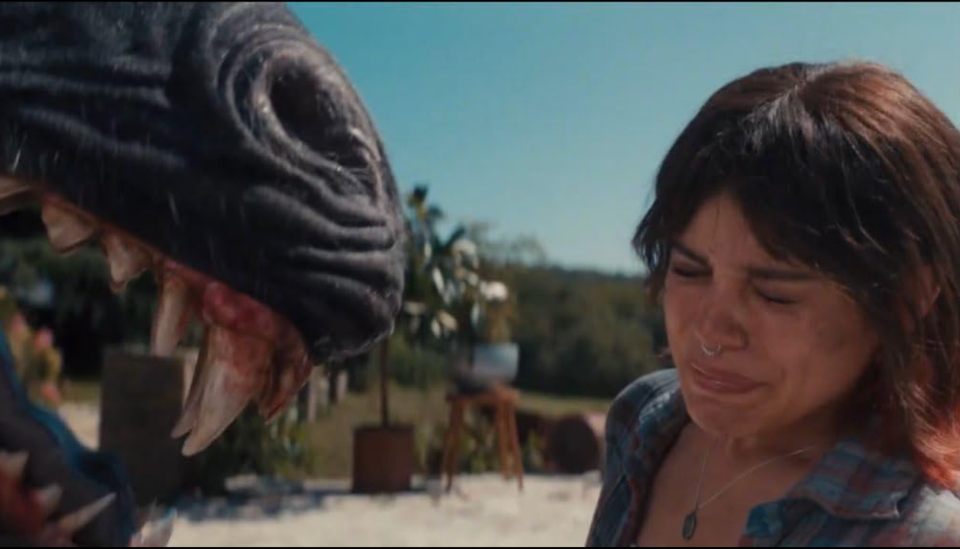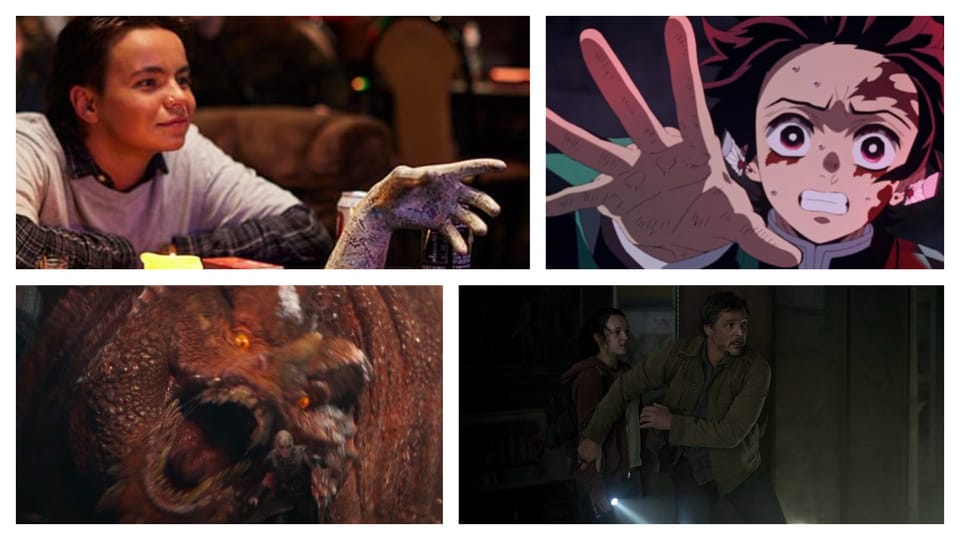Whether book, movie, or show, I have always been captivated by the idealized world of Arthurian myth. My love grew even further after being introduced to the classic medieval renditions of the tales, which widened my understanding of these tales of Camelot, chivalry, grand adventures, and courtly love.
The Arthurian myths were stories told and retold by a number of authors throughout the middle ages (such as Chrétien de Troyes, Geoffrey Chaucer, and Marie de France). Among these numerous variations, Sir Gawain and the Green Knight, written by an unknown fourteenth-century poet, is easily one of my favorite tales. (A24 has a good video summary of the story and its origins.)
The story begins at King Arthur’s court in Camelot, where holiday festivities are underway. As part of the celebration, the King asks for his knights to share tales of their adventures, with the greatest story being presented with an award. Young Gawain, nephew to King Arthur, is as yet unproven and has no such story to tell.
However, the scene is interrupted when a mysterious Green Knight appears and offers the knights of the round a challenge: Any knight of Arthur’s court may strike the Green Knight a blow, and in return, he will deliver the same blow upon that man in a year’s time.
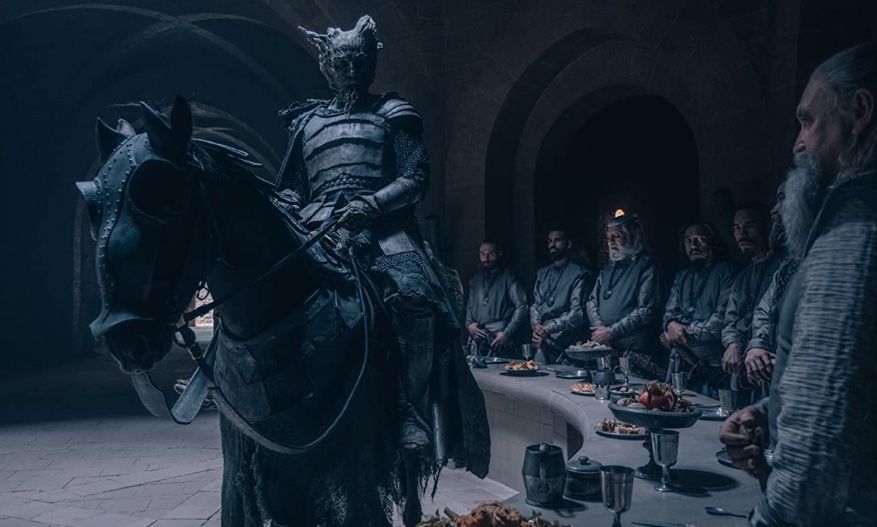
Among the brave men present, only Gawain steps forward, eager to prove himself. He faces the Green Knight and strikes him once, chopping off his head. Unperturbed, the green knight stands, picks up his head off of the floor, and tells Gawain to find him at the Green Chapel in a year’s time in order to complete the game by receiving the returning blow.
A year passes and Gawain begins his journey to find the Green Knight and fulfill his promise, facing a number of adventures that test his courage, resilience, and honor along the way. Sir Gawain and the Green Knight is a vivid tale, full of gorgeous contrasts, love and death and trust and renewal.
In adapting the tale, David Lowery called upon his own childhood love of the Arthurian myths to create his film, The Green Knight. Although his love for the myths faded in adulthood, Lowery says that this movie "has accidentally but not surprisingly wound up being one of the most personal films I’ve ever made."
The Green Knight is everything I could hope for in an adaptation of my favorite tale — beautiful, earthy, and uncanny. The movie opens much the same way as the story. It presents a Camelot that feels grounded in reality. Muddy streets and livestock contrast the clean, grandeur of Arthur's court. We meet Gawain amid this mud and grit, as he wakes from a drunken knight in a brothel. He's a young man living from one moment to the next with no real drive or purpose.
Brilliantly played by Dev Patel, Gawain is a deeply human figure. In every scene, Patel provides a depth of emotion that swims under the surface. For example, when his uncle King Arthur calls Gawain to his side to speak with him, we see the longing for acceptance and honor blended with his regret at not having any stories of himself to share with the King.
When the Green Knight appears and issues his challenge (called by Gawain's mother, Morgan Le Fay), his arrival is perfectly timed. Gawain sees an opportunity to fulfill his desire to have a story to tell. Without understanding the full consequences, he removed the Green Knight's head — only to be horrified to see the man reclaim his head and ride away, while the other knights of the round cheer at the spectacle.
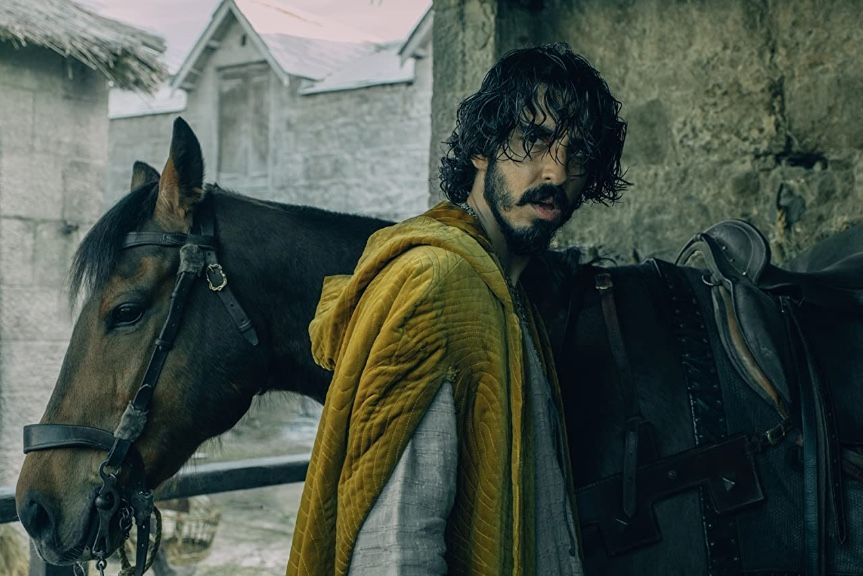
After wiling away the year, Gawain is faced with having to fulfill his promise. Though reluctant, he rides out into the wilds to find the Green Chapel where the knight is said to reside.
It is in the wilds that the film delves into the uncanny, using deft camera work and cinematography to deliver a feeling of the surreal. As in the tale, he is faced with a number of dangerous and increasingly strange adventures that test his mettle and chivalry. At several points, his honor and knightly virtue is called into question, and Gawain wrestles with making the right decision, which is displayed in the grounded sense of humanity that Patel brings to the role.
At its heart, the original Arthurian myth is a morality tale. By weaving ambiguity into the tale, The Green Knight provides the viewers space to explore the complexities of that morality.
The Green Knight is a movie I'll watch over and over again, falling more in love with it each time as I discover new layers. It also has me wanting to reread the original tale in all of its many translations.
More on 'The Green Knight'
Along with the experience of the film itself, I've also been enjoying reading commentary on The Green Knight, which provides insight into the various interpretations made possible by the ambiguous storytelling.
Elyse Martin and Sean Rubin discuss "Chivalry and Medieval Ambiguity in The Green Knight" —
"But by opening up that space of ambiguity, and refusing to give clear answers, the medieval mindset becomes something to be explored and experienced, rather than something to be observed with detachment... Can this life after death be proven? It hasn’t yet—which is why the ambiguous end of the film so captures the essence of the medieval worldview. While you are alive, witches can ruin your life from afar, saints and chapels can provoke visions that make you question the nature of your reality, death is really the only constant."
Jude Ellison S. Doyle explains why “The Green Knight is the Existential Queer Folk Horror We Need" —
"I thought I could put death off until I was ready, but no-one has that power. All we can do is decide who we want to be when we die. This, anyway, is the bracing moral of 'The Green Knight', David Lowery’s gorgeous folk-horror adaptation of the Arthurian legend. I’d heard it was grim; there were stories about audience members storming out of the theater. I found its embrace of death liberating — and kind of beautifully gay."
Nikki Davis describes The Green Knight as an "Achievement in Mood and Visual Storytelling" —
"In the same way Gawain can’t attain a true sense of honor until he experiences trials outside of the castle walls, the audience can’t understand the scope of the narrative until they see their protagonist run the gamut. He both wins and loses, encounters temptations and tests, seeks knowledge and actively avoids it, and fails and succeeds at accepting assistance… all in the face of a death that’s already been guaranteed him in a matter of days. The whole thing is, of course, a neat metaphor for our silly little existence: The way we set up goals and chase dreams and abide by made-up rules, even though we all know our clocks will run out regardless of our choices."
And just because it sounds like a good time, A24 has released a table top RPG based on The Green Knight.
